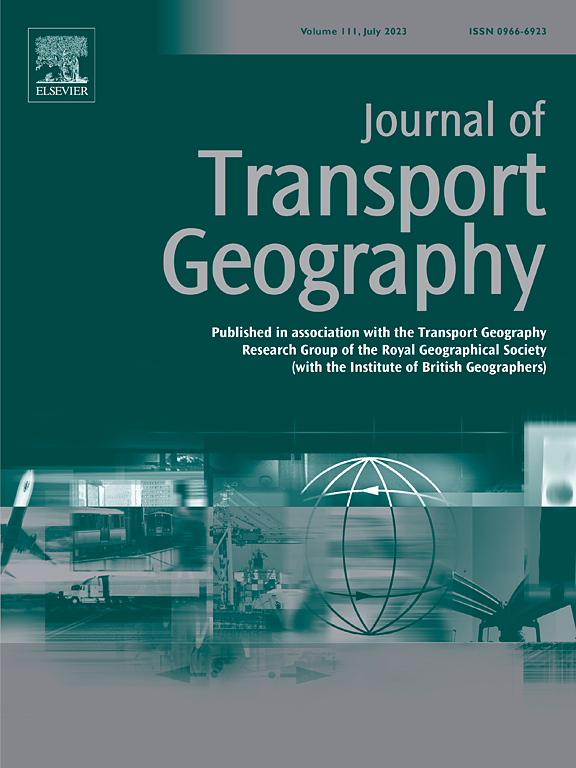Built environment, car ownership and PM2.5: Stronger causal estimates from a quasi-experiment
IF 6.3
2区 工程技术
Q1 ECONOMICS
引用次数: 0
Abstract
The causal relationship between the built environment, car ownership, and travel-induced pollutant emissions remains obscured by residential self-selection (RSS) bias. This study leverages China's unique housing demolition and resettlement program to conduct a quasi-experiment, analyzing how the built environment impacts car ownership and travel-induced vehicle-related PM2.5 emissions in Shanghai. By employing structural equation modeling (SEM) on data from 5370 households relocated via government-assigned housing (i.e., replacement housing), we circumvent RSS bias and isolate the built environment's causal effects. Results reveal that higher residential density and land-use mix decrease car ownership but increase PM2.5 emissions to a certain extent, while increased road network density and bicycle/pedestrian connectivity reduce both car ownership and emissions. Car ownership, influenced by socio-demographics, the built environment, and transport services, mediates the relationship. Findings highlight the dual role of transportation and urban planning: extremely dense, mixed-use areas may inadvertently elevate emissions without green transport modes, whereas pedestrian-friendly designs and robust public transit reduce car dependency, hence decreasing emissions. This study provides actionable insights for policymakers to align urban and transport development with sustainability goals, advancing empirical evidence in a high-density Asian metropolis and addressing gaps in regional literature.
建筑环境、汽车保有量和PM2.5:准实验中更强的因果估计
建筑环境、汽车拥有量和旅行引起的污染物排放之间的因果关系仍然被住宅自我选择(RSS)偏见所掩盖。本研究利用中国独特的房屋拆迁安置计划进行准实验,分析上海建筑环境如何影响汽车保有量和出行引发的车辆相关PM2.5排放。通过对5370个通过政府分配住房(即替代住房)搬迁的家庭的数据使用结构方程模型(SEM),我们规避了RSS偏差并隔离了建筑环境的因果影响。结果表明,较高的居住密度和土地利用结构降低了汽车保有量,但在一定程度上增加了PM2.5排放,而增加的道路网络密度和自行车/行人连通性既降低了汽车保有量,又降低了排放。受社会人口统计学、建筑环境和交通服务影响的汽车拥有量调解了这一关系。研究结果强调了交通和城市规划的双重作用:如果没有绿色交通方式,极其密集的混合用途地区可能会无意中增加排放,而行人友好型设计和健全的公共交通则会减少对汽车的依赖,从而减少排放。本研究为政策制定者提供了可操作的见解,使城市和交通发展与可持续发展目标保持一致,推进了高密度亚洲大都市的经验证据,并解决了区域文献的空白。
本文章由计算机程序翻译,如有差异,请以英文原文为准。
求助全文
约1分钟内获得全文
求助全文
来源期刊

Journal of Transport Geography
Multiple-
CiteScore
11.50
自引率
11.50%
发文量
197
期刊介绍:
A major resurgence has occurred in transport geography in the wake of political and policy changes, huge transport infrastructure projects and responses to urban traffic congestion. The Journal of Transport Geography provides a central focus for developments in this rapidly expanding sub-discipline.
 求助内容:
求助内容: 应助结果提醒方式:
应助结果提醒方式:


